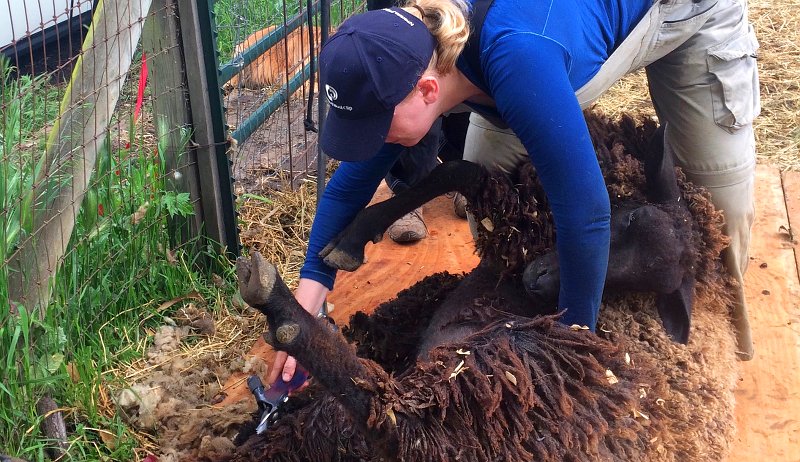
I’m afraid I am about to body-shame some sheep. This spring, I have seen more overfed and overweight sheep than ever, thanks in part to generous rain that has enriched pastures in my area. A lot of folks are surprised to learn how harmful overfeeding sheep can be to the animals’ health, and they genuinely do not know their sheep are overweight. Here’s what you need to know about overfeeding sheep to keep your flock healthy and svelte.
What’s Wrong With Overfeeding Sheep?
The dangers are manifold. Here are some things caused by overfeeding.
- It makes laboring and lambing difficult for ewes. If you find yourself having to pull more lambs than usual, and those lambs are large, it’s a sign that your ewes may be overfed (or were, especially during the final four to six weeks of gestation).
- It contributes to uterine prolapse.
- It decreases fertility.
- It impairs mammary gland development.
- It can kill bummer lambs.
- It wastes feed and increases costs.
- It causes acidosis, a life-threatening condition. Acidosis is caused by the overfeeding of grain, specifically. Bacteria in the sheep’s rumen use the carbohydrates in grain to make acid. If too much acid is formed, the acid is absorbed into the sheep’s bloodstream and causes the animal’s entire body to become acidic.
- It coarsens and shortens wool (and alpaca and goat fiber, too). Excess protein increases fiber diameter, and thicker fiber feels coarser. Excess fat can reduce the staple length of wool. What looks like an improvement in wool density might simply be a sign that the sheep is overfed. Genetics affect the extent to which coarsening occurs; not all sheep are equally predisposed to it.
- It makes sheep uncomfortable. Sheep might have trouble breathing or lying down comfortably, or they might gag and gasp if you turn them over, their weight pushing against the diaphragm. The sheep, fighting to work its way into a more comfortable position, might be more difficult to handle if you need to examine them, trim their hooves, and so on.
How To Identify Overweight Sheep?
It can be difficult to spot an overweight sheep, especially when sheep are covered in a year or more of wool, but it is possible.
You can create a baseline. If you have access to a livestock scale and know what breed your sheep is, you can start by comparing each sheep’s weight to what is typical of its breed. If your sheep is near normal, chances are it’s neither over- nor underfed.
Check each sheep’s body condition to assess the nutritional well-being of your flock, using established scoring measures. This thorough resource from Australia’s Department of Agriculture can show you how to body score sheep in seconds. It includes descriptions, diagrams and video.
Listen to those in the know. If a shearer or a livestock vet mentions that a particular sheep is overweight, that person is probably right. Such people see a lot of sheep, so they have a large pool of visual data on which they make comparisons.
How To Guard Against Overfeeding Sheep
Talk to your vet or local agriculture extension school if you’re uncertain of or concerned about nutrition management. In general, sheep do not need supplemental grain as long as pasture or hay is plentiful, but this varies a great deal by geography. Sheep who are lactating, very young or elderly, however, might benefit from some supplemental grain.
Don’t show your love for your flock by feeding them sugary snacks such as overripe melons from the garden (which I’ve seen happen).
Do not apply these practices equally to any goats you might have. Goats have neither the body fat nor wool that sheep have. The goat is a different animal that, in general, has greater nutrition needs than sheep.




